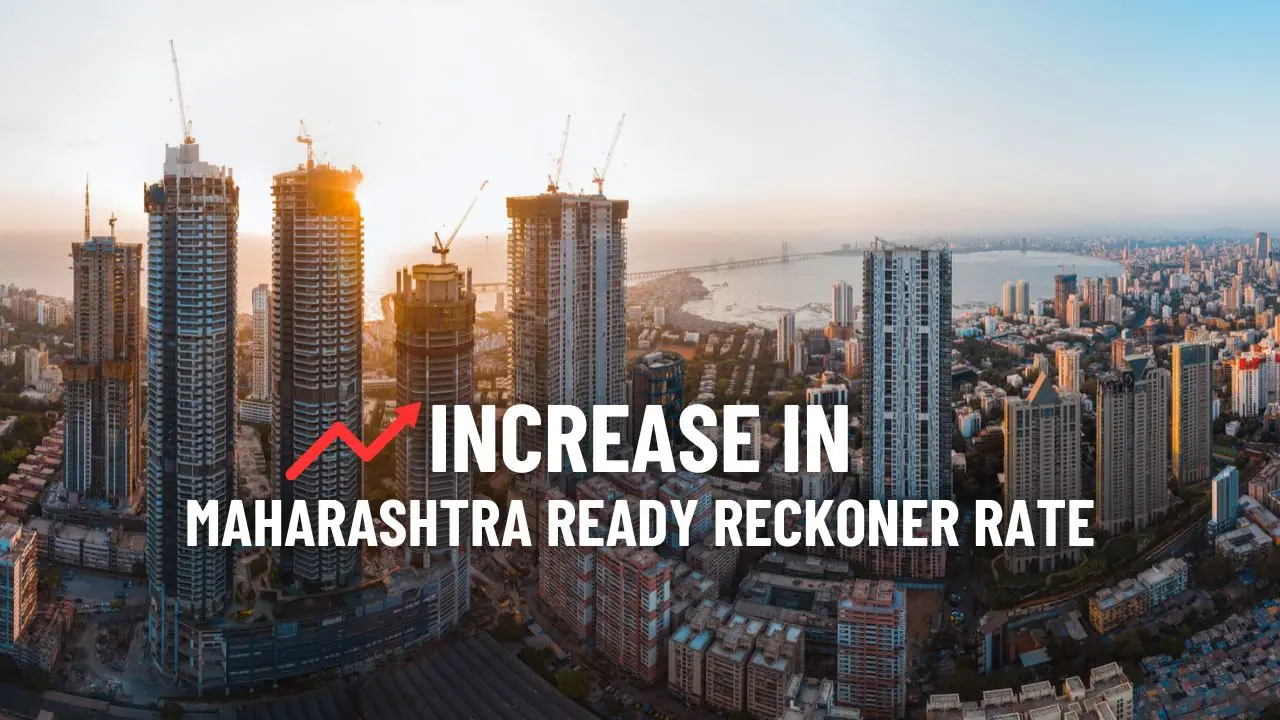Rise in the Maharashtra Ready Reckoner Rate | How this will impact homebuyers
For the fiscal year 2025–2026, the Maharashtra government raised the state's ready reckoner (RR) rates, which are used to calculate property values for stamp duty and taxes, after maintaining them at the same level for the previous two years.
The cities with the largest increases in RR rates are Solapur (10.17%), Ulhasnagar (9%), Amravati (8.03%), and Thane (7.72%). As opposed to the goal of ₹63,500 crore from stamp duty and registration in FY 2025–2026, the cash-strapped Maharashtra government is anticipated to receive at least ₹10,000 crore from the increase in RR rates.
Since the government raised the ready reckoner rates (RRR) by an average of 3.89% for the fiscal year 2025–2026, it is anticipated that property prices in Maharashtra will rise.
When the revised rates go into effect on April 1, 2025, property owners will most likely pay more because stamp duty and registration fees are directly tied to RRR. This change may lead to higher property costs because RR rates are tied to municipal and construction fees, particularly in areas where real estate prices are already high.
What are ready reckoner rates?
In certain states, ready reckoner rates (RRR) are also referred to as circle rates. In order to determine stamp duty and registration fees when purchasing or selling a property, the government sets these minimum property prices for various locations.
Stamp duty is still computed on the government-set price even if a property is sold for less than the RRR. The stamp duty is computed on the actual sale price if the property is sold for more than the RRR.
For instance, you must purchase a 1,000 square foot apartment in an area where the RRR is Rs 10,000 per square foot. A lower price, like Rs 9,000 per square foot, or a higher price, like Rs 12,000 per square foot, are the two options available to the seller.
Since the deal price of Rs 1.2 crore is higher than the RRR of Rs 1 crore, stamp duty will be applied to the deal price if the property is sold for Rs 12,000 per square foot.
Since Rs 1 crore is the minimum amount set by the government, the stamp duty will be computed on the RRR if the deal price is Rs 9,000 per square foot or Rs 90 lakh in total.
How does RRR impact you?
Currently, buyers of real estate in Mumbai must pay 1% registration fees, 5% stamp duty, and 1% metro premium. Because of the increase in RRR, buying a home in the city will become even more costly. By passing these additional costs on to buyers, developers and builders can increase the price of real estate, according to industry experts.
Mumbai's market will be affected in two ways. First, the premium that builders pay for approval of the floor space index will increase by about 0.5%. Secondly, the cost of stamp duty registration will rise for homebuyers, meaning you'll pay more taxes when purchasing a property.
Maharashtra's municipal corporations experienced the highest rise in the Ready Reckoner Rate (RRR), increasing by 5.9%, while Solapur noted the biggest rise at 10.2 %. Pune district saw an increase of 6.8 %, while Mumbai recorded the lowest rise at 3.4 %. Other regions, such as Nashik and Kolhapur, experienced hikes of 7.3% and 5%, respectively. The RRR was last increased by 5% in FY 2022–2023.
It is expected that the rise in RRR will generate at least Rs 10,000 crore for the cash-strapped Maharashtra government, compared to the Rs 63,500 crore that stamp duty and registration are estimated to generate in FY 2025–2026.
Conclusion
Rates are elevated in areas with limited supply and high demand, as buyers compete more vigorously. Premium real estate in high-demand locations has a higher RRR. Similarly, prime locations and top-notch infrastructure drive up prices in upscale neighborhoods. Commercial properties generally command higher rates than residential ones, given their larger market value and greater income potential. Purchasing a house may become more expensive due to the recent increase in Maharashtra's Ready Reckoner Rates (RRR). Buyers will incur higher taxes when registering properties because stamp duty and registration fees are linked to RRR. Property prices may rise further as developers and builders pass on the additional expenses to customers.

